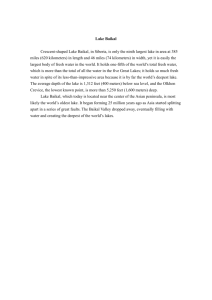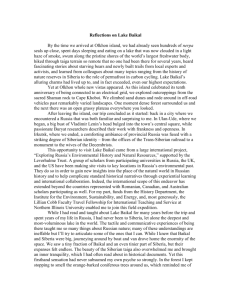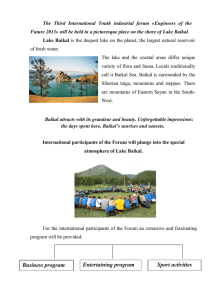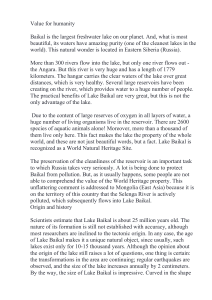IMMISCIBILITY OF DIATOM FLORAS IN LAKE BAIKAL: SCIENTIFIC PHENOMENON OR FANTASY?
advertisement
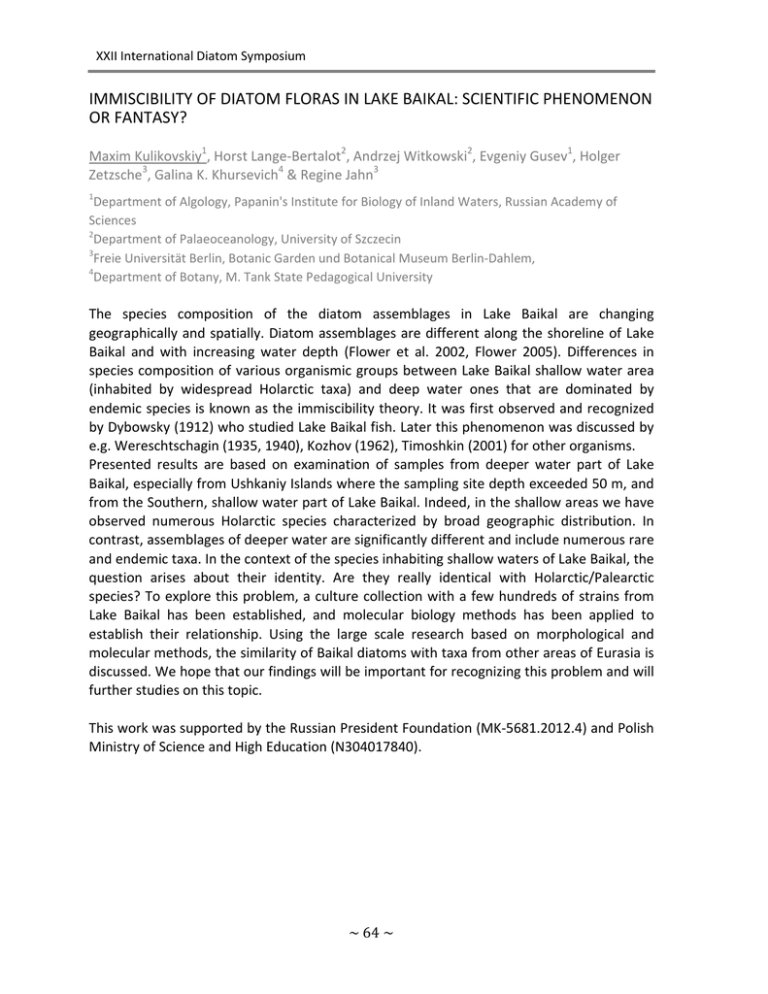
XXII International Diatom Symposium IMMISCIBILITY OF DIATOM FLORAS IN LAKE BAIKAL: SCIENTIFIC PHENOMENON OR FANTASY? Maxim Kulikovskiy1, Horst Lange‐Bertalot2, Andrzej Witkowski2, Evgeniy Gusev1, Holger Zetzsche3, Galina K. Khursevich4 & Regine Jahn3 1 Department of Algology, Papanin's Institute for Biology of Inland Waters, Russian Academy of Sciences 2 Department of Palaeoceanology, University of Szczecin 3 Freie Universität Berlin, Botanic Garden und Botanical Museum Berlin‐Dahlem, 4 Department of Botany, M. Tank State Pedagogical University The species composition of the diatom assemblages in Lake Baikal are changing geographically and spatially. Diatom assemblages are different along the shoreline of Lake Baikal and with increasing water depth (Flower et al. 2002, Flower 2005). Differences in species composition of various organismic groups between Lake Baikal shallow water area (inhabited by widespread Holarctic taxa) and deep water ones that are dominated by endemic species is known as the immiscibility theory. It was first observed and recognized by Dybowsky (1912) who studied Lake Baikal fish. Later this phenomenon was discussed by e.g. Wereschtschagin (1935, 1940), Kozhov (1962), Timoshkin (2001) for other organisms. Presented results are based on examination of samples from deeper water part of Lake Baikal, especially from Ushkaniy Islands where the sampling site depth exceeded 50 m, and from the Southern, shallow water part of Lake Baikal. Indeed, in the shallow areas we have observed numerous Holarctic species characterized by broad geographic distribution. In contrast, assemblages of deeper water are significantly different and include numerous rare and endemic taxa. In the context of the species inhabiting shallow waters of Lake Baikal, the question arises about their identity. Are they really identical with Holarctic/Palearctic species? To explore this problem, a culture collection with a few hundreds of strains from Lake Baikal has been established, and molecular biology methods has been applied to establish their relationship. Using the large scale research based on morphological and molecular methods, the similarity of Baikal diatoms with taxa from other areas of Eurasia is discussed. We hope that our findings will be important for recognizing this problem and will further studies on this topic. This work was supported by the Russian President Foundation (MK‐5681.2012.4) and Polish Ministry of Science and High Education (N304017840). ~ 64 ~
